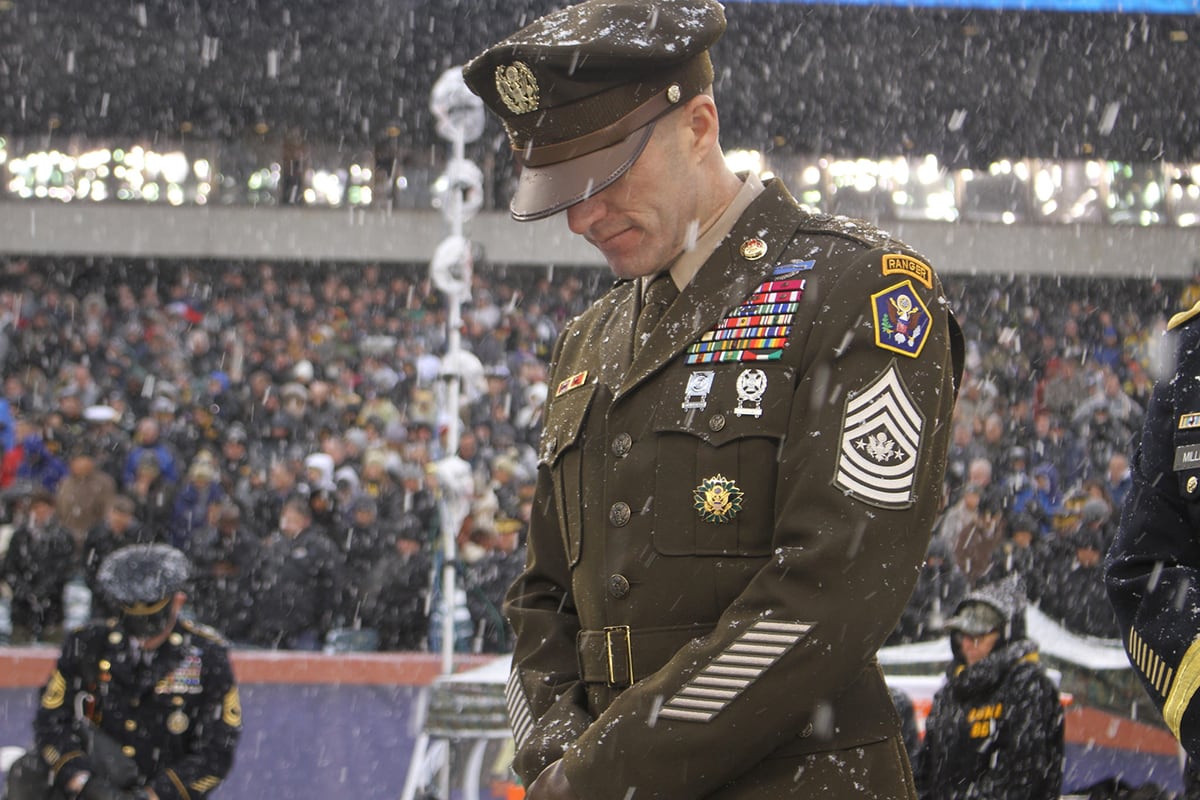President Trump touted the Army’s new service uniform at a White House event on Thursday, calling out its distinctive belt and telling an audience that the uniform is “very expensive.”
During remarks in celebration of the Wounded Warrior Project Soldier Ride, Trump listed achievements in bolstering the U.S.'s military might during his administration, including a new uniform for soldiers.
“We’re rebuilding our military like never before. Brand new fighter jets. Brand new ships of all kinds. Every soldier has the best equipment,” he said. “In the Army, we’re even getting new uniforms, and those beautiful new uniforms with the belt. It was a big deal ― the belt.”
The Army did spend time going back and forth about the belt ― first, whether it should be brought back at all on the World War II era-inspired uniform, and then deciding to give the buckle a subdued finish, rather than shiny brass.
“And if you think those uniforms were inexpensive, they were very expensive,” he added. “They were very. But they wanted it and we got it.”
A total budget line has not so far been available for the new service uniform, which is still in the field testing phase. Officials have said that the program will be cost-neutral.
A final contract award is expected later this year, but there are still details to work out, like the precise textile blend of the shirt, an executive with the company producing the prototypes told Army Times earlier this month.
Sergeant Major of the Army Dan Dailey told Army Times in 2018 that higher-quality, longer-lasting materials might increase the price of the Greens over the current blue Army Service Uniform, but that cost savings would come from the way it’s issued.
RELATED

For example, leadership made the decision ahead of the uniform’s official November 2018 approval to begin issuing custom Greens to soldiers when they report to their first units of assignment.
That way, the Army can save on alterations for soldiers whose weights fluctuate between basic training and their first duty stations, requiring alterations, and completely do away with eating the cost of soldiers who drop out during initial entry training.
Of about 110,000 soldiers who report for basic training every year, 6,000 of them will go home before advanced individual training.
“By the time they go from AIT to their first unit, that number drops down to about 94,000,” Col. Stephen Thomas, PEO Soldier’s protection and individual equipment program manager, told reporters in November.
The Army expects to begin issuing the uniform in 2020, giving currently serving soldiers until 2028 to phase out their blues as a service uniform and buy the new set.
Meghann Myers is the Pentagon bureau chief at Military Times. She covers operations, policy, personnel, leadership and other issues affecting service members.





